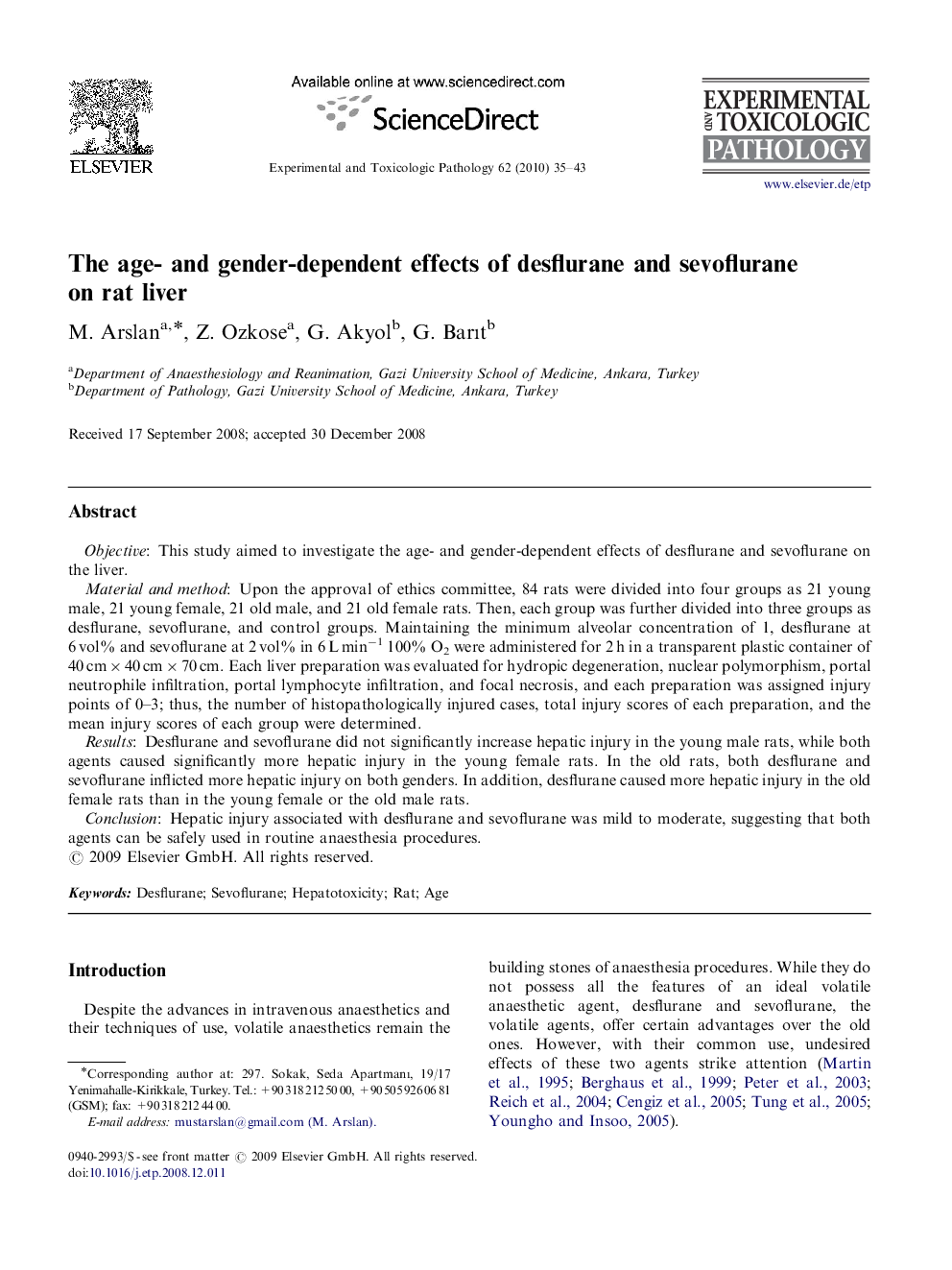| Article ID | Journal | Published Year | Pages | File Type |
|---|---|---|---|---|
| 2499636 | Experimental and Toxicologic Pathology | 2010 | 9 Pages |
ObjectiveThis study aimed to investigate the age- and gender-dependent effects of desflurane and sevoflurane on the liver.Material and methodUpon the approval of ethics committee, 84 rats were divided into four groups as 21 young male, 21 young female, 21 old male, and 21 old female rats. Then, each group was further divided into three groups as desflurane, sevoflurane, and control groups. Maintaining the minimum alveolar concentration of 1, desflurane at 6 vol% and sevoflurane at 2 vol% in 6 L min−1 100% O2 were administered for 2 h in a transparent plastic container of 40 cm×40 cm×70 cm. Each liver preparation was evaluated for hydropic degeneration, nuclear polymorphism, portal neutrophile infiltration, portal lymphocyte infiltration, and focal necrosis, and each preparation was assigned injury points of 0–3; thus, the number of histopathologically injured cases, total injury scores of each preparation, and the mean injury scores of each group were determined.ResultsDesflurane and sevoflurane did not significantly increase hepatic injury in the young male rats, while both agents caused significantly more hepatic injury in the young female rats. In the old rats, both desflurane and sevoflurane inflicted more hepatic injury on both genders. In addition, desflurane caused more hepatic injury in the old female rats than in the young female or the old male rats.ConclusionHepatic injury associated with desflurane and sevoflurane was mild to moderate, suggesting that both agents can be safely used in routine anaesthesia procedures.
